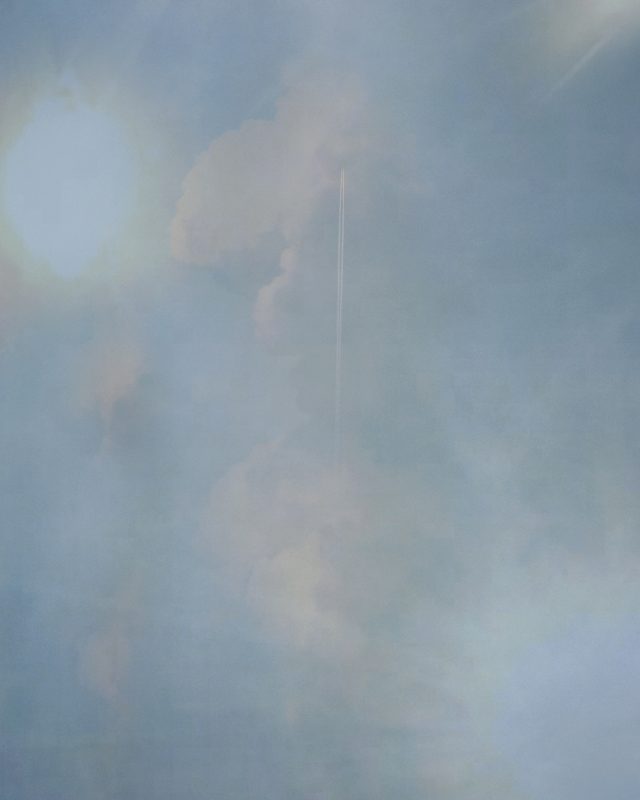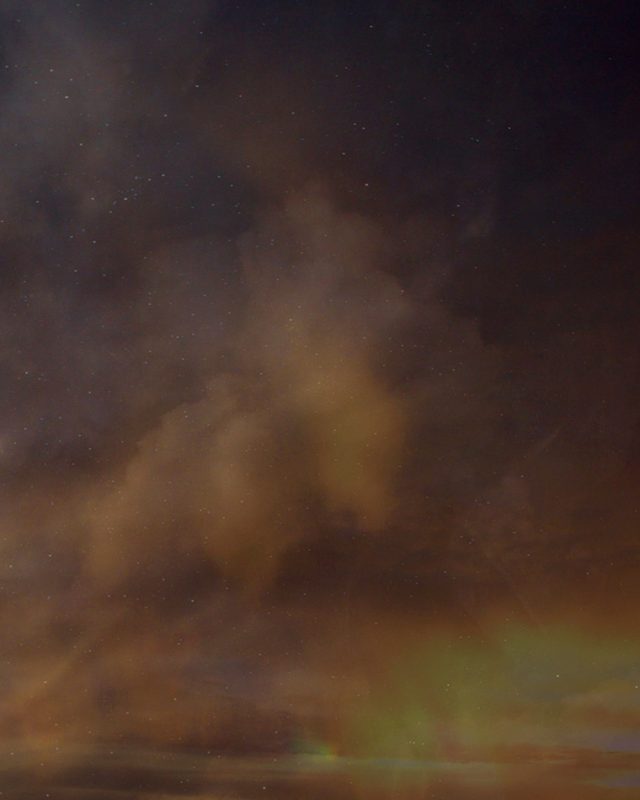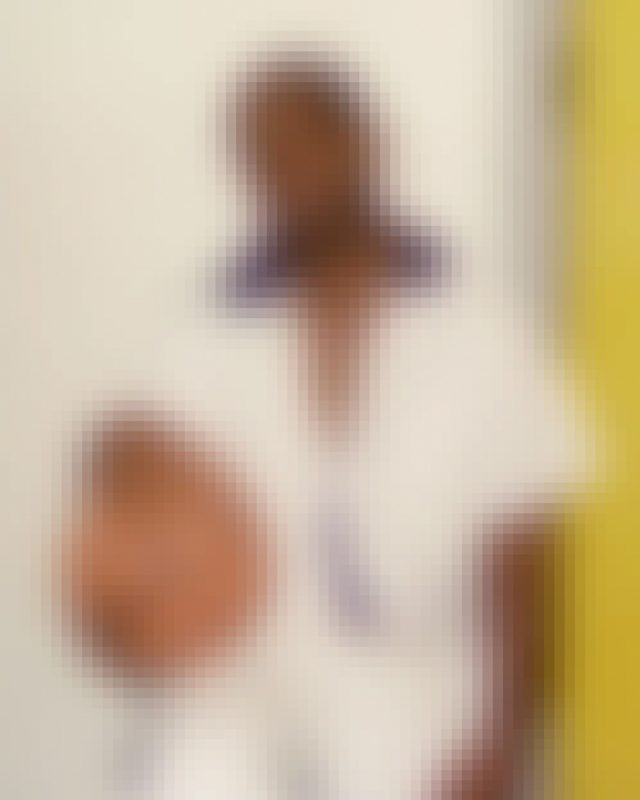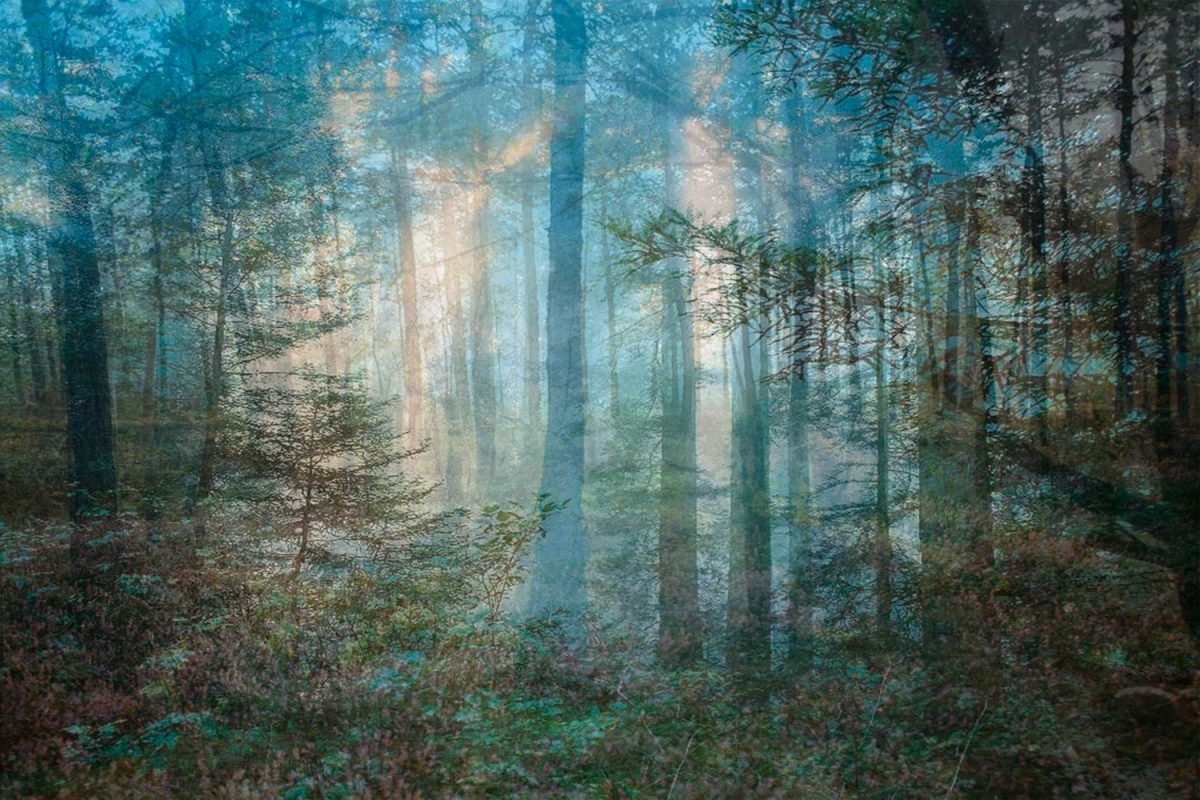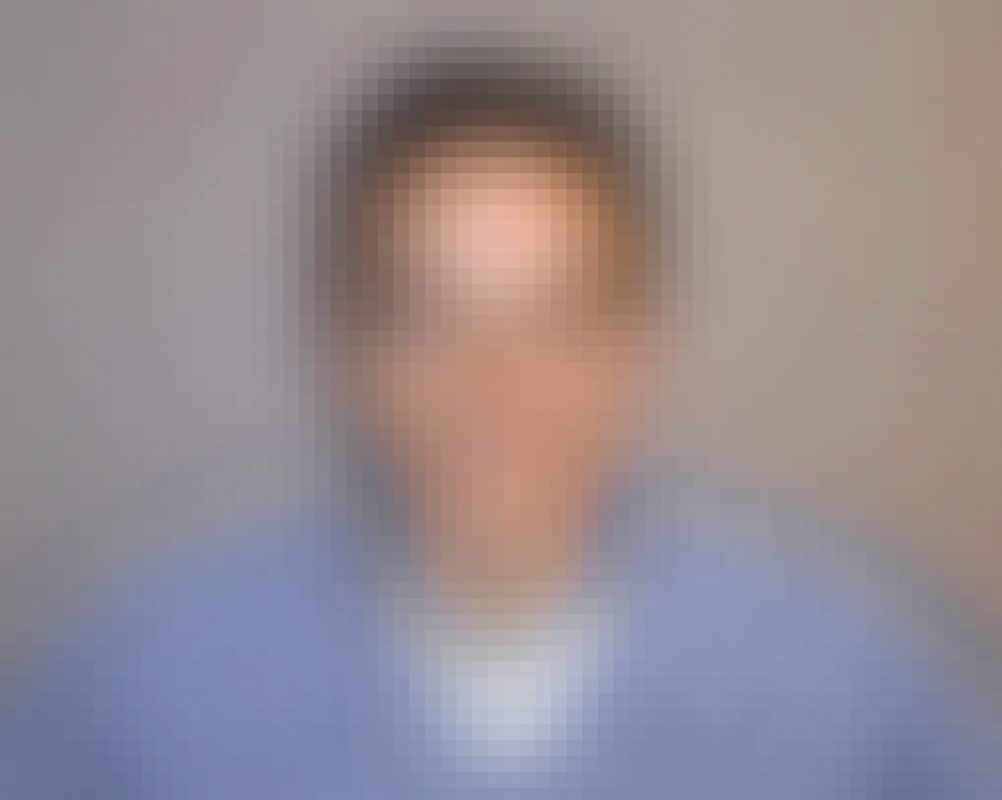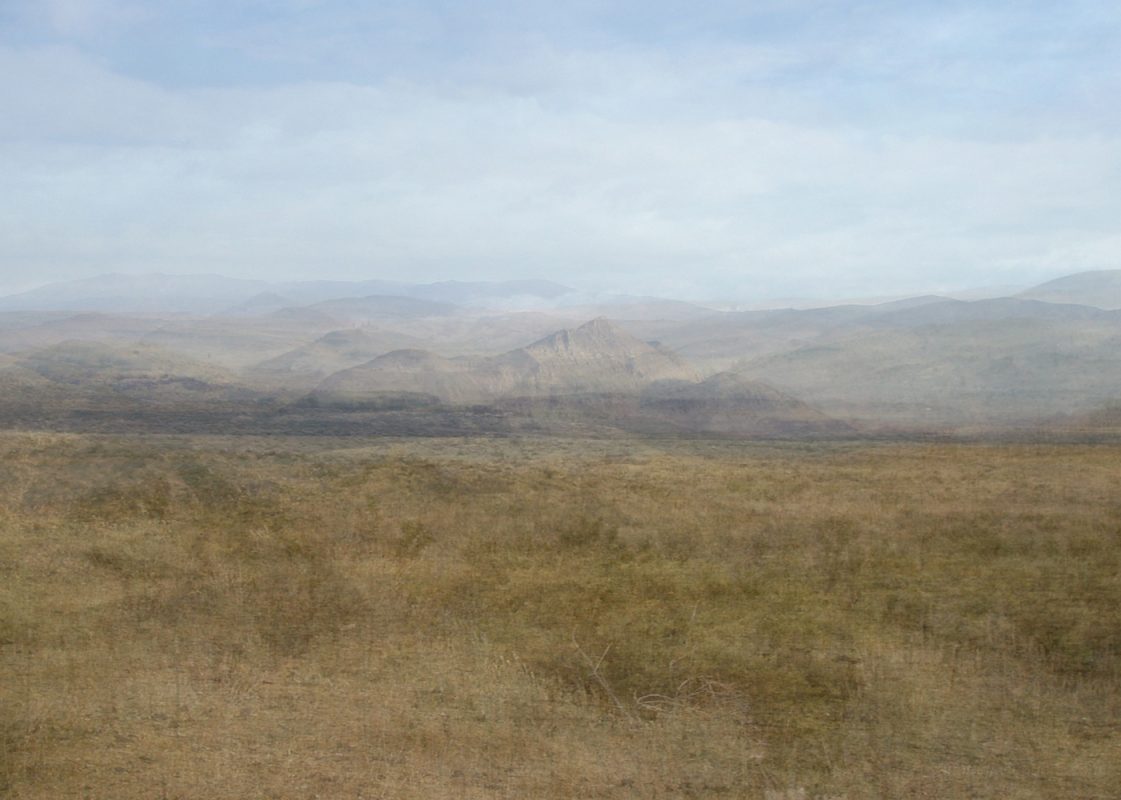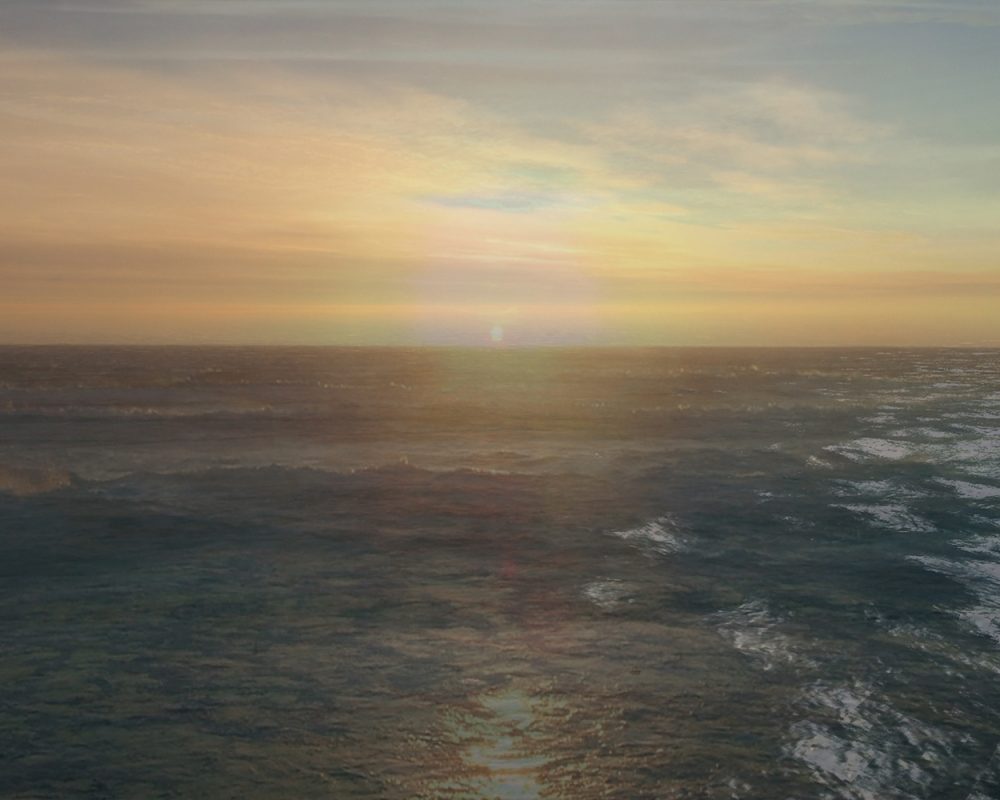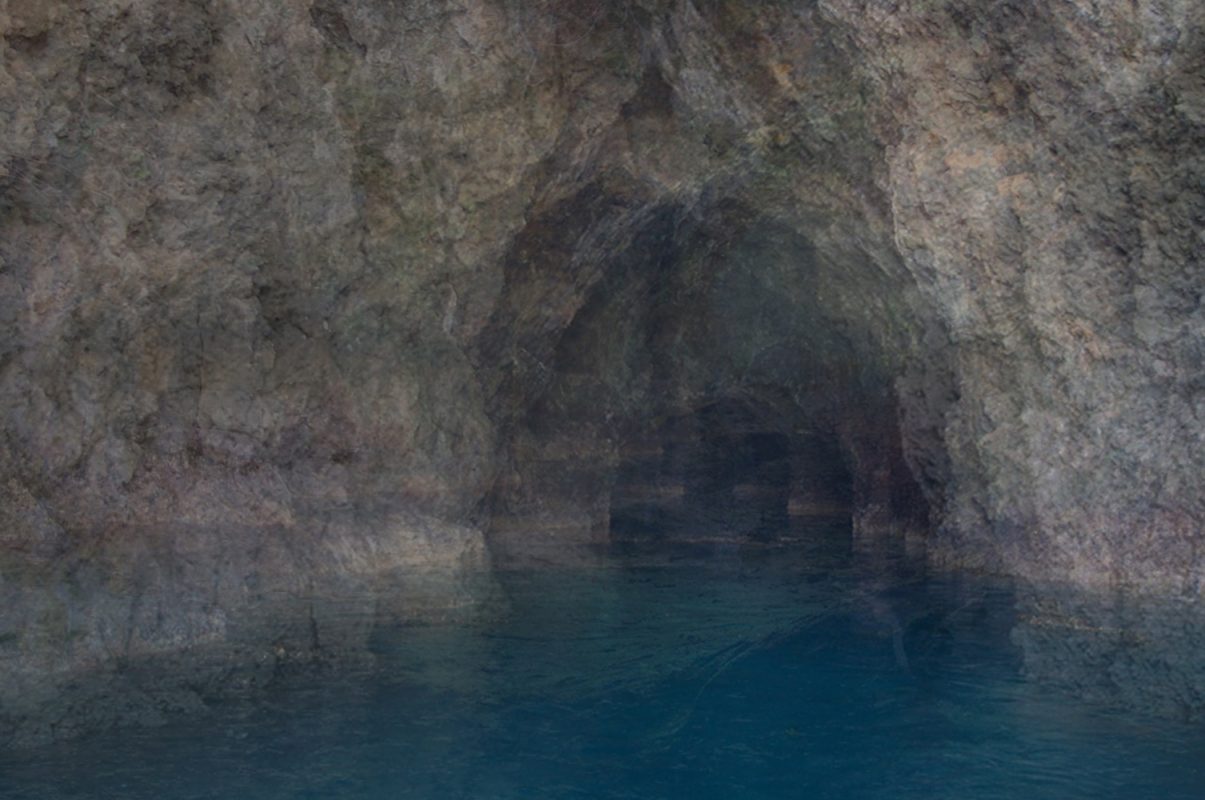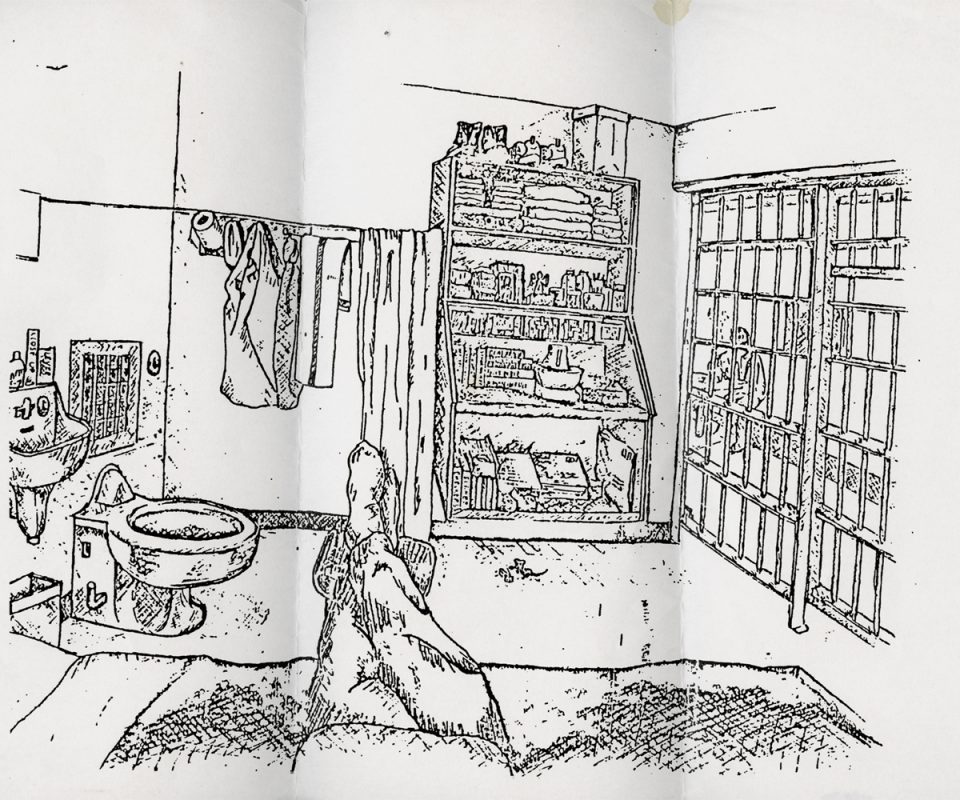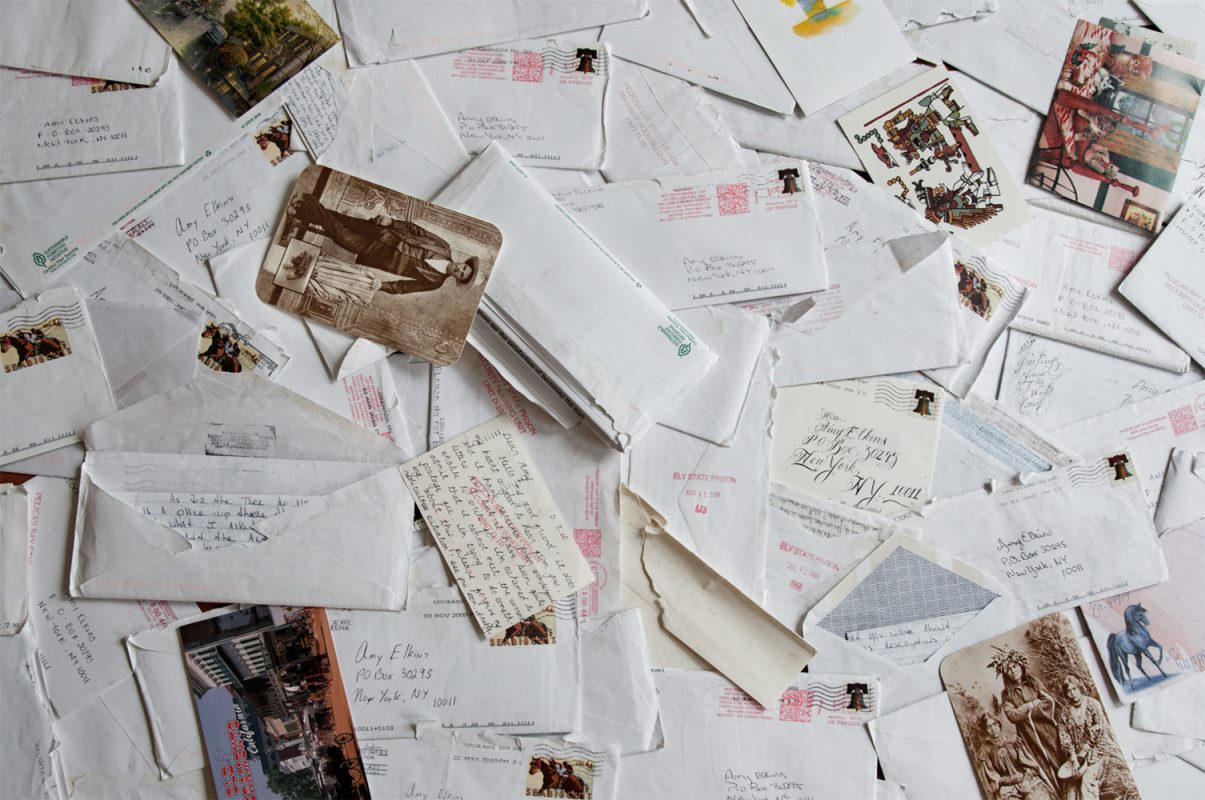Amy Elkins
Black is the Day Black is the Night
Essay by Daniel C. Blight
Those prisoners that write while in prison do so as a means to manifest themselves; to declare to the outside world their otherwise concealed lives and to preserve something of their memory for others. In his The Consolations of Writing (2014), Rivkah Zim considers the canon of prison literature – from Anicius Boethius to Irina Ratushinskaya – as an experiment in memory, stating that the prison has historically “denoted a place of extreme suffering that forced attention on vital matters worthy of remembrance and careful consideration… the arts of memory may also be fixed and rendered distinct by the action of writing.” From a sense of confinement and immobility arises a need to articulate oneself, to resist one’s own invisibility. So it is said, writing from prison is an act of literary resistance.
Amy Elkins’ Black is the Day Black is the Night considers the concept of prison time in relation to the personal identity of seven male prisoners in separate American penitentiaries, with whom she exchanged letters. In her images – often abstracted but rarely altogether evanesced – Elkins has visualised a very specific kind of confined remembering. Based on personal details – age, place of incarceration, sentence length and type of conviction – the artist has made a number of composite photographs, illustrations and found objects that reflect the lives of her subjects. In various formal and conceptual ways, these are visual portraits of people gleaned from their prison writing, or from their memories penned within the obsolete time of penal servitude.
To write from prison is to remember within a particular and defunct form of time. In durance, writing shifts time into redundancy: “The value of an hour changes and all the apparatus built up over the years for dealing with the passage of time suddenly becomes obsolete… measured as the outside world measure it, time becomes intolerable.” says Michael Fitzgerald in his 1977 Prisoners in Revolt. The time of prison writing is like no other, and images created by it, or deriving from it, take on strange and unique characteristics as a result.
Of course, prison writing reflects social concerns as well as literary ones. The Western ‘correctional’ system at large, marketed by neoliberal politics, is far less poetic in its socioeconomic associations. The “punitive turn” – a phrase coined by David Garland in his 2001 publication The Culture of Control – describes the way in which the American state has a new political identity for its intolerant approach to crime and imprisonment. Unsurprisingly in today’s world of post-fact politics, this new attitude to crime is the result of a kind of populism; one in which experts are ignored and instead a sense of vague ‘power to the people’ rhetoric pervades in which it’s better to appeal to the ‘rational’ and ‘moderate’ political centre, than it is to the minority views of statisticians or academic experts which might suggest or describe a less digestible image of America’s penal system.
In the recently published 465-page National Academic Press study The Growth of Incarceration in the United States (2014), the statistics are shocking: in the last four decades the rate of imprisonment in the US has quadrupled – one in one-hundred people are currently in prison; the prison population is predominantly comprised of poor, ethnic minority men under forty years of age; more than half the prison population suffer from a mental illness or drug addiction; and there has been a 400% increase in prison spending, much of this allocated to basic amenities scaled up to manage large numbers of inmates, which as a result leaves lacklustre funding for prison education and psychological rehabilitation. By these results, the punitive turn is one that disavows the idea of prison as a ‘correctional’ facility – ideally one in which adults might receive mental health support and education in order to prepare them for living in the outside world – and instead reframes it as a place of permanent residence for socially immobile people of colour. Its financial structure is for profit and its politics are indisputably racist. So when you hear Donald Trump say “we need to get a lot tougher”, what he really means is “we need to get a lot more racist, bigoted and intolerant”. This is neoliberal penal populism in action.
Elkins stopped writing to her pen-pals under different circumstances: three were executed, two declined to continue corresponding and two were released. It is clear that writing to prisoners comes with huge responsibility and prisoner well-being, relief from isolation and the balance between friendship and safety developed when writing is both of utmost importance and case-specific. Yet the commitment begs various questions: what do you say? When do you stop?
Alongside pixelated portraits, Elkins has included a number of images of landscapes composed of layered photographs. Of all the painterly detail of these composites, it is the vivid green of trees that stands out. A subject not unfamiliar to prison writers, trees are successful metaphors for life and freedom. In 2014 the graduating class of Goddard College in Vermont invited writer and journalist Mumia Abu-Jamal – a man who had been sentenced to death and wrote ferociously on politics and ethics from prison – to undertake their commencement speech. Of the many poetic allusions and political affirmations made, it is Abu-Jamal’s description of trees that best reflects Elkins’ images, and one can imagine how he might have visualised his own landscapes not dissimilar from the artist’s: “I last walked on campus during the late 1970s. But although it was undoubtedly quite a long time ago, it still sits in memory, and sometimes even visits in dreams of the funky atmosphere that suffused the campus like a cloud of exhaled marijuana smoke. What really moved me however was the green life – the abundance of grass, trees standing like ancient sentinels, the majestic mountains of Vermont, which possessed a beauty that was, to a guy from the city, simply breathtaking. I remember with crystal clarity walking through the woods back to our dorms and feeling pure rapture in the presence of those trees. How many centuries had trees stood on this earth? My mind looked back to Indians who must’ve trod through these very woods, my steps touching the ground that once crunched under their moccasined feet.”
From within prison, a person penning a letter to another individual they do not know or will never meet, might think of them as the representative of an invisible, silent audience in the outside world. As is the case with Abu-Jamal’s essay writing, prison forces you to dwell on things, in strange durations. Time in prison has contingent as well as poetic uses. Rivkah Zim observes that for those locked up, prison writing is a welcome intrusion: “Writing distracted them, thus alleviating (to some measure) the contingent pressures of time and place”.
What is the relationship between prison time and photographic time in Elkins’ work then? Photography’s specific rendition of time is opposed to the literary resistance of prison time, which is there to be survived in movement. Prisoners must move forward in time as quickly as possible, while remaining alive. Hence Elkins builds composite images – layers of image and text; small gestures towards a form of durance (to once again use the noun which means both imprisonment and duration) which the stasis of single photographic frames might not provide. Prison time is not the ‘then’ that persists into ‘now’ that defines time in photography for Roland Barthes in his Camera Lucida (1980), but rather the “dual sense of time passing and standing still” understood by Azrini Wahidin in her 2006 essay Time and the Prison Experience.
Laura Mulvey refers to Hollis Frampton’s version of time in his film (nostalgia) (1971) as a “fascination with temporal paradox and contradiction”, which also seems to apply to Elkins’ composite photographic images that transcribe the identities and experience of prisoners through their writings. However, this might also be an example of photography’s power to convert one form of time to another, as Barthes’ or Frampton’s or Ekins’ time does not seem to be a luxury afforded by prison writing’s time-as-redundancy: prison time is “obsolete” and “intolerable”, to return to Fitzgerald – it cannot be converted into anything other than a reflection of its anachronistic self. Hence, Elkins reproduces photographic time as error, abstraction and pixelation as a means to reflect both the philosophical and social experience of time in prison under the influence of the punitive turn. ♦
All images courtesy of the artist. © Amy Elkins
—
Daniel C. Blight is a writer based in London. He is co-editor of Loose Associations, a periodical on image culture published by The Photographers’ Gallery; visiting tutor in the department of Critical & Historical Studies, Royal College of Art and lecturer in photography at the University of Brighton.


